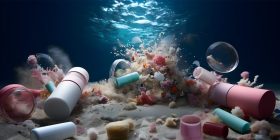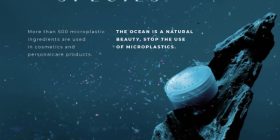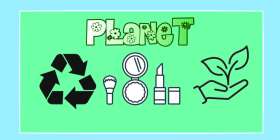Planet
The cosmetic industry plays a substantial role within our environment, from its usage of materials to its output of wastage. The negative effects of our industry are caused by the way economic growth is valued more than the quality of processes, leading to the problems we now face in the environment. This makes it pivotal for us to understand how to make the industry more renewable and how we can reimagine the lifespans of our products and packaging.
The starting point for a good deal of innovation around sustainability is to try to dissociate business success from relentless expansion of material consumption, in an attempt to temper resource depletion, pollution and associated effects such as climate change (Fletcher, et al, 2012). Goal 12 of the UN’s sustainable development goals focuses on responsible consumption and production, aiming to achieve efficient management of our shared natural resources alongside the demand for economic growth (UN, 2015). Cosmetic brands are responsible for the quantity and process by which they utilise our natural resources, as well as how they dispose of waste. They should be engaging with ideas that focus on how to potentially maintain their level of economic sales without having to sacrifice environmental protection and sustainability in the process.
According to the British Beauty Council, 95% of cosmetic packaging goes to waste, with only 14% of it being sent to recycle plants, and 9% actually being recycled, leaving the rest to go to landfills (The British Beauty Council, 2018). Packaging plays a notable role in the beauty industry, as every product requires some form of packaging. The volume of plastic packaging, however, is unnecessarily high, with the way in which we dispose of it being equally as inefficient. Sustainability in cosmetics is first addressed in the design phase, which influences all the subsequent phases (Martin et al, 2023), therefore the approach towards achieving sustainability starts from square one. It’s the early stages that help contribute to the regenerative, recyclable nature of a products lifespan, which overall creates a circular economy for products. By creating a circular economy within the cosmetic industry, we are enabling products to consistently have a purpose and use from the initial design of the product, through to the end, where it can be recycled/repurposed.
A brand that has successfully adapted its products towards a circular life cycle is Ren skincare, a British skincare company that is working on their zero-waste journey. By utilising landfill and ocean plastics, they have managed to remove and repurpose 1.5 tonnes of oceanic plastics to bottle their Atlantic Kelp range alone. They’ve also worked on removing single use sachets and partnered with multiple companies, including the Surfrider Foundation, by helping to remove 400kg of plastic on beach cleanups. With a moto that skincare should work for everyone, including the planet, and take action to preserve its natural resources for future generations (Ren, 2022) it’s evidence that companies can work towards a more sustainable future in cosmetics.
Reference list:
The British Beauty Council (2018) Planet Positive Beauty Guide: Packaging. Available at: https://britishbeautycouncil.com/ppbg/packaging/ (Accessed: 4 October 2023).
Fletcher, K, & Grose, L 2012, Fashion and Sustainability : Design for Change, Laurence King Publishing, London. Available from: ProQuest Ebook Central. (Accessed: 5 October 2023)
Martins, A.M. and Marto, J.M., 2023. A sustainable life cycle for cosmetics: From design and development to post-use phase. Sustainable Chemistry and Pharmacy, 35, p.101178 (Accessed: 5 October 2023)
Ren Skincare (2022) Our Zero Waste Journey so Far Available at: https://usa.renskincare.com/blogs/clean-thoughts/our-zero-waste-journey-so-far (Accessed: 7 October 2023)
United Nations (2015) Sustainable Development Goals Available at: https://www.undp.org/sustainable-development-goals/responsible-consumption-and-production (Accessed: 4 October 2023).






